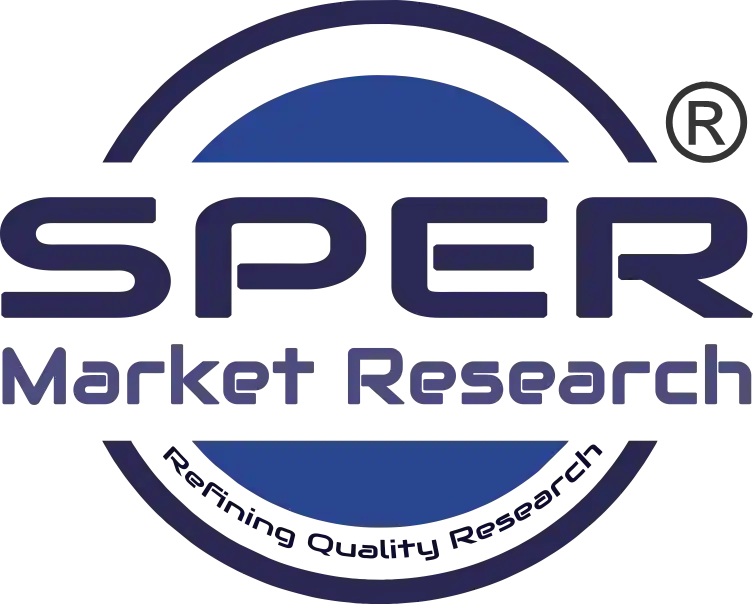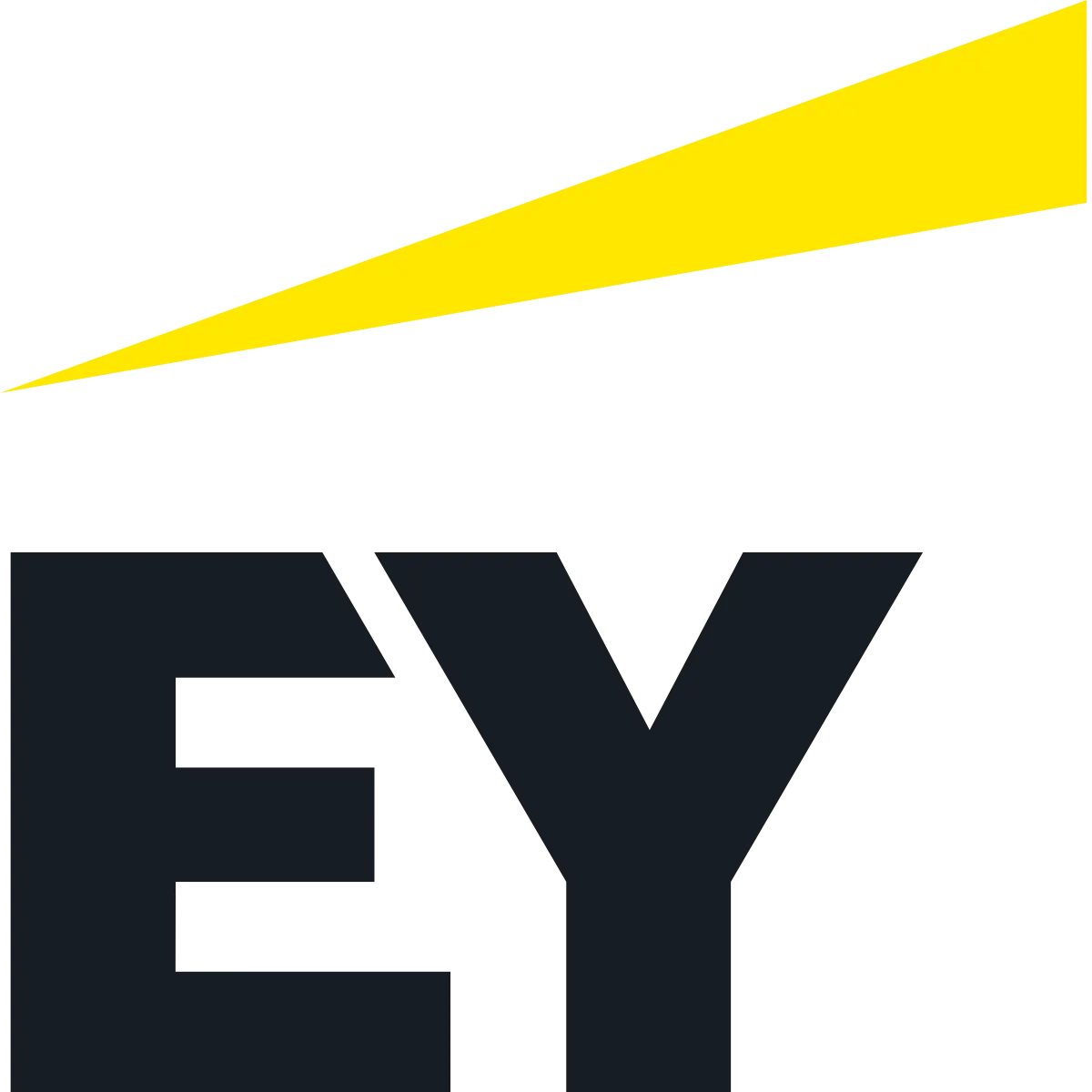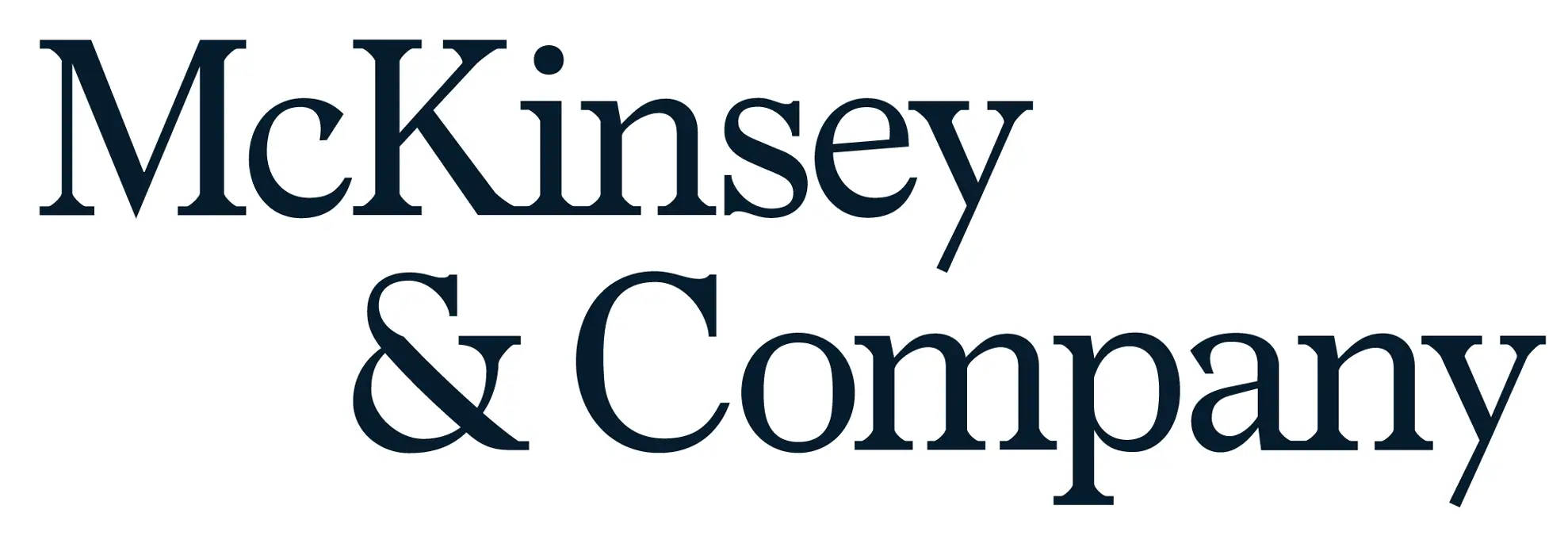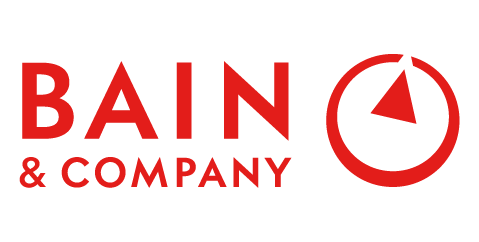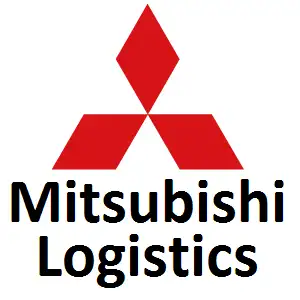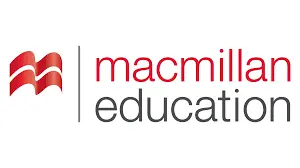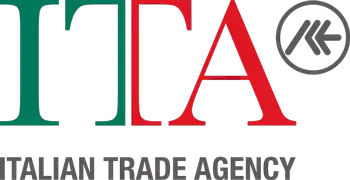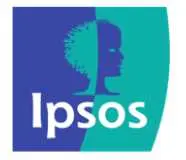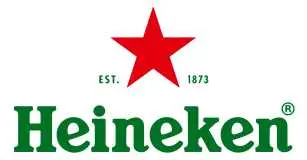
Kidney Cancer Drugs Market Trends, Size, Growth, Demand Revenue and Future Outlook
Kidney Cancer Drugs Market Growth, Size, Trends Analysis - By Cancer Type, By Therapy, By Drug Class, By Route of Administration, By Distribution Channel - Regional Outlook, Competitive Strategies and Segment Forecast to 2034
| Published: Mar-2025 | Report ID: PHAR2504 | Pages: 1 - 261 | Formats*: |
| Category : Pharmaceutical | |||
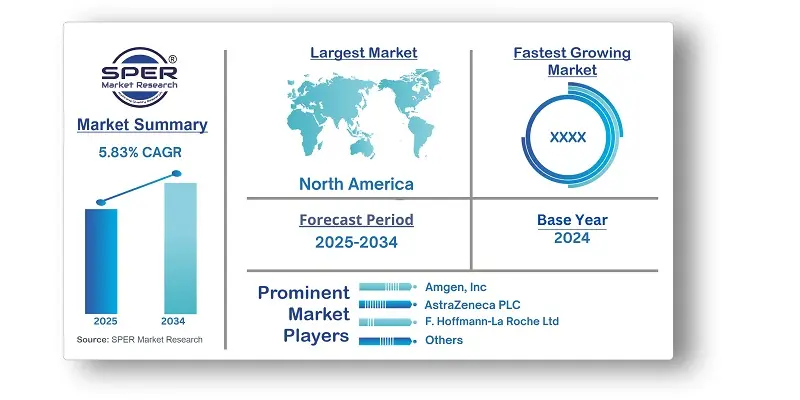
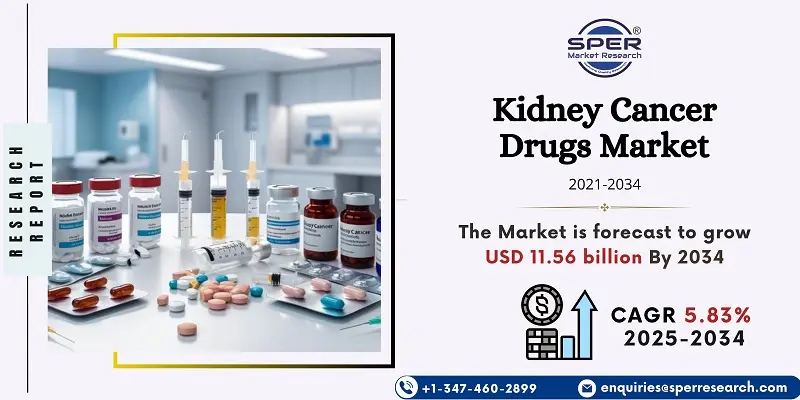
- Merck declared in September 2023 that the FDA had given its supplemental new drug application (sNDA) for WELIREG, an oral inhibitor of hypoxia-inducible factor-2 alpha (HIF-2α), priority review. The oral inhibitor is intended to treat adult patients with advanced renal cell carcinoma (RCC) following immune checkpoint and anti-angiogenic therapies.
- Belzutifan was created by a UTSW spinoff at UT Southwestern Medical Centre and authorised by the FDA in December 2023 for the treatment of metastatic kidney cancer.
| Report Metric | Details |
| Market size available for years | 2021-2034 |
| Base year considered | 2024 |
| Forecast period | 2025-2034 |
| Segments covered | By Cancer Type, By Therapy, By Drug Class, By Route of Administration, By Distribution Channel. |
| Regions covered | North America, Latin America, Asia-Pacific, Europe, and Middle East & Africa. |
| Companies Covered | Active Biotech AB, Amgen, Inc, Astellas Pharma Inc, AstraZeneca PLC, Bayer AG, Bristol-Myers Squibb Company, Eisai Co., Ltd, Exelixis, Inc, F. Hoffmann-La Roche Ltd, Genentech, Inc, GSK plc, Helsinn Healthcare SA, Johnson & Johnson Services, Inc, Merck & Co., Inc. |
- Global Kidney Cancer Drugs Market Size (FY’2021-FY’2034)
- Overview of Global Kidney Cancer Drugs Market
- Segmentation of Global Kidney Cancer Drugs Market By Cancer Type (Renal cell carcinoma, Transitional cell cancer, Wilms tumor, Renal sarcoma)
- Segmentation of Global Kidney Cancer Drugs Market By Therapy (Targeted therapy, Immunotherapy, Chemotherapy, Other therapies)
- Segmentation of Global Kidney Cancer Drugs Market By Drug Class (Angiogenesis inhibitors, Monoclonal antibodies, mTOR inhibitors, Cytokine immunotherapy, Other drug classes)
- Segmentation of Global Kidney Cancer Drugs Market By Route of Administration (Oral, Intravenous, Subcutaneous)
- Segmentation of Global Kidney Cancer Drugs Market By Distribution Channel (Hospital pharmacy, Brick and mortar, E-commerce)
- Statistical Snap of Global Kidney Cancer Drugs Market
- Expansion Analysis of Global Kidney Cancer Drugs Market
- Problems and Obstacles in Global Kidney Cancer Drugs Market
- Competitive Landscape in the Global Kidney Cancer Drugs Market
- Details on Current Investment in Global Kidney Cancer Drugs Market
- Competitive Analysis of Global Kidney Cancer Drugs Market
- Prominent Players in the Global Kidney Cancer Drugs Market
- SWOT Analysis of Global Kidney Cancer Drugs Market
- Global Kidney Cancer Drugs Market Future Outlook and Projections (FY’2025-FY’2034)
- Recommendations from Analyst
1.1. Scope of the report1.2. Market segment analysis
2.1. Research data source
2.1.1. Secondary Data2.1.2. Primary Data2.1.3. SPERs internal database2.1.4. Premium insight from KOLs
2.2. Market size estimation
2.2.1. Top-down and Bottom-up approach
2.3. Data triangulation
4.1. Driver, Restraint, Opportunity and Challenges analysis
4.1.1. Drivers4.1.2. Restraints4.1.3. Opportunities4.1.4. Challenges
5.1. SWOT Analysis
5.1.1. Strengths5.1.2. Weaknesses5.1.3. Opportunities5.1.4. Threats
5.2. PESTEL Analysis
5.2.1. Political Landscape5.2.2. Economic Landscape5.2.3. Social Landscape5.2.4. Technological Landscape5.2.5. Environmental Landscape5.2.6. Legal Landscape
5.3. PORTERs Five Forces
5.3.1. Bargaining power of suppliers5.3.2. Bargaining power of buyers5.3.3. Threat of Substitute5.3.4. Threat of new entrant5.3.5. Competitive rivalry
5.4. Heat Map Analysis
6.1. Global Kidney Cancer Drugs Market Manufacturing Base Distribution, Sales Area, Product Type6.2. Mergers & Acquisitions, Partnerships, Product Launch, and Collaboration in Global Kidney Cancer Drugs Market
7.1. Renal cell carcinoma (RCC)7.2. Transitional cell cancer7.3. Wilms tumor7.4. Renal sarcoma
8.1. Targeted therapy8.2. Immunotherapy8.3. Chemotherapy8.4. Other therapies
9.1. Angiogenesis inhibitors9.2. Monoclonal antibodies9.3. mTOR inhibitors9.4. Cytokine immunotherapy (IL-2)9.5. Other drug classes
10.1. Oral10.2. Intravenous10.3. Subcutaneous
11.1. Hospital pharmacy11.2. Brick and mortar11.3. E-commerce
12.1. Global Kidney Cancer Drugs Market Size and Market Share
13.1. Asia-Pacific
13.1.1. Australia13.1.2. China13.1.3. India13.1.4. Japan13.1.5. South Korea13.1.6. Rest of Asia-Pacific
13.2. Europe
13.2.1. France13.2.2. Germany13.2.3. Italy13.2.4. Spain13.2.5. United Kingdom13.2.6. Rest of Europe
13.3. Middle East and Africa
13.3.1. Kingdom of Saudi Arabia13.3.2. United Arab Emirates13.3.3. Qatar13.3.4. South Africa13.3.5. Egypt13.3.6. Morocco13.3.7. Nigeria13.3.8. Rest of Middle-East and Africa
13.4. North America
13.4.1. Canada13.4.2. Mexico13.4.3. United States
13.5. Latin America
13.5.1. Argentina13.5.2. Brazil13.5.3. Rest of Latin America
14.1. Active Biotech AB
14.1.1. Company details14.1.2. Financial outlook14.1.3. Product summary14.1.4. Recent developments
14.2. Amgen, Inc
14.2.1. Company details14.2.2. Financial outlook14.2.3. Product summary14.2.4. Recent developments
14.3. Astellas Pharma Inc
14.3.1. Company details14.3.2. Financial outlook14.3.3. Product summary14.3.4. Recent developments
14.4. AstraZeneca PLC
14.4.1. Company details14.4.2. Financial outlook14.4.3. Product summary14.4.4. Recent developments
14.5. Bayer AG
14.5.1. Company details14.5.2. Financial outlook14.5.3. Product summary14.5.4. Recent developments
14.6. Bristol-Myers Squibb Company
14.6.1. Company details14.6.2. Financial outlook14.6.3. Product summary14.6.4. Recent developments
14.7. Eisai Co., Ltd
14.7.1. Company details14.7.2. Financial outlook14.7.3. Product summary14.7.4. Recent developments
14.8. Exelixis, Inc
14.8.1. Company details14.8.2. Financial outlook14.8.3. Product summary14.8.4. Recent developments
14.9. F. Hoffmann-La Roche Ltd
14.9.1. Company details14.9.2. Financial outlook14.9.3. Product summary14.9.4. Recent developments
14.10. Genentech, Inc
14.10.1. Company details14.10.2. Financial outlook14.10.3. Product summary14.10.4. Recent developments
14.11. GSK plc
14.11.1. Company details14.11.2. Financial outlook14.11.3. Product summary14.11.4. Recent developments
14.12. Helsinn Healthcare SA
14.12.1. Company details14.12.2. Financial outlook14.12.3. Product summary14.12.4. Recent developments
14.13. Johnson & Johnson Services, Inc
14.13.1. Company details14.13.2. Financial outlook14.13.3. Product summary14.13.4. Recent developments
14.14. Merck & Co., Inc
14.14.1. Company details14.14.2. Financial outlook14.14.3. Product summary14.14.4. Recent developments
14.15. Others
SPER Market Research’s methodology uses great emphasis on primary research to ensure that the market intelligence insights are up to date, reliable and accurate. Primary interviews are done with players involved in each phase of a supply chain to analyze the market forecasting. The secondary research method is used to help you fully understand how the future markets and the spending patterns look likes.
The report is based on in-depth qualitative and quantitative analysis of the Product Market. The quantitative analysis involves the application of various projection and sampling techniques. The qualitative analysis involves primary interviews, surveys, and vendor briefings. The data gathered as a result of these processes are validated through experts opinion. Our research methodology entails an ideal mixture of primary and secondary initiatives.
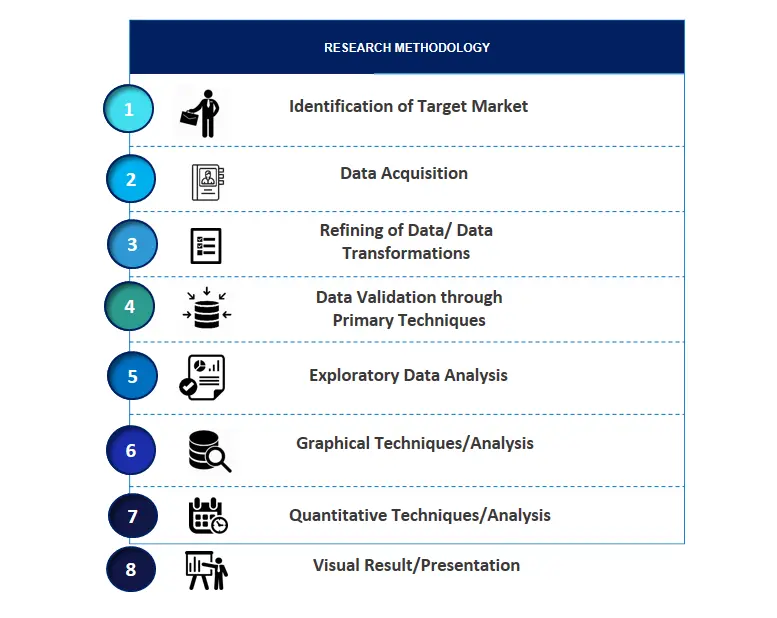
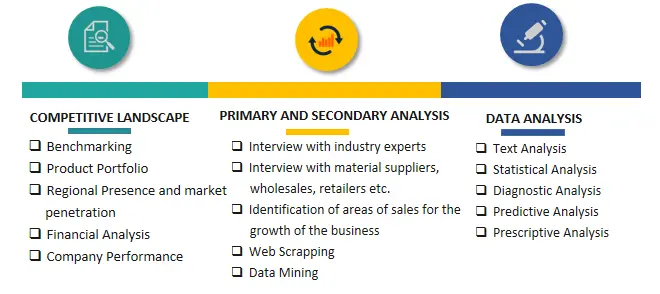

Frequently Asked Questions About This Report
PLACE AN ORDER
Year End Discount
Sample Report
Pre-Purchase Inquiry
NEED CUSTOMIZATION?
Request CustomizationCALL OR EMAIL US
100% Secure Payment
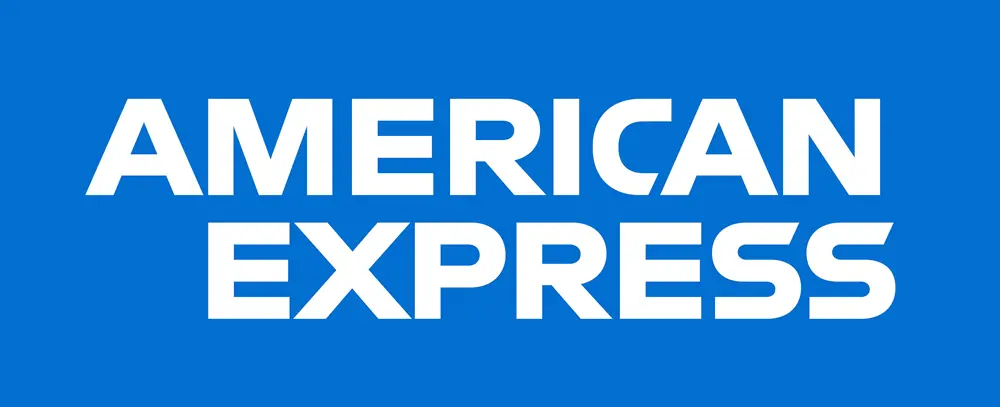

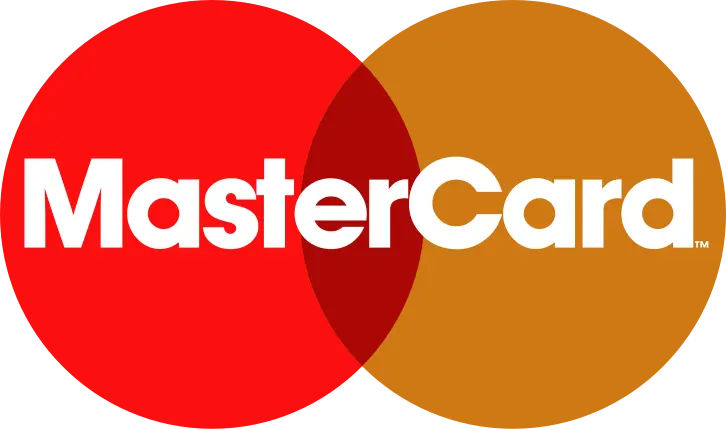



Related Reports
Our Global Clients
Our data-driven insights have influenced the strategy of 200+ reputed companies across the globe.
